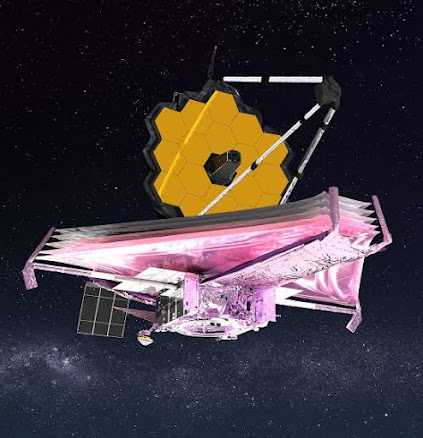JAMES WEBB SPACE TELESCOPE (JWST)
The James Webb Space Telescope (JWST) is a large, powerful telescope designed to observe the universe in infrared light. It is named after James E. Webb, who served as the second administrator of NASA from 1961 to 1968 and played a key role in the Apollo program.
The JWST is a collaboration between NASA, the European Space Agency (ESA), and the Canadian Space Agency (CSA).
It has a primary mirror that is 6.5 meters in diameter, which is more than twice the size of the Hubble Space Telescope's primary mirror. The mirror is made up of 18 hexagonal segments that can be individually adjusted to achieve the precise shape needed to capture images.
The JWST is designed to observe the universe in the infrared portion of the electromagnetic spectrum, which is invisible to the human eye. This will allow it to study objects that are too faint or too distant to be observed by other telescopes.
It will be able to see back in time to the earliest galaxies and stars that formed after the Big Bang, and it will also be able to study the formation of stars and planets in our own galaxy.
In summary, the James Webb Space Telescope is a groundbreaking instrument that promises to revolutionize our understanding of the universe and provide us with new insights into the mysteries of the cosmos.


Comments
Post a Comment